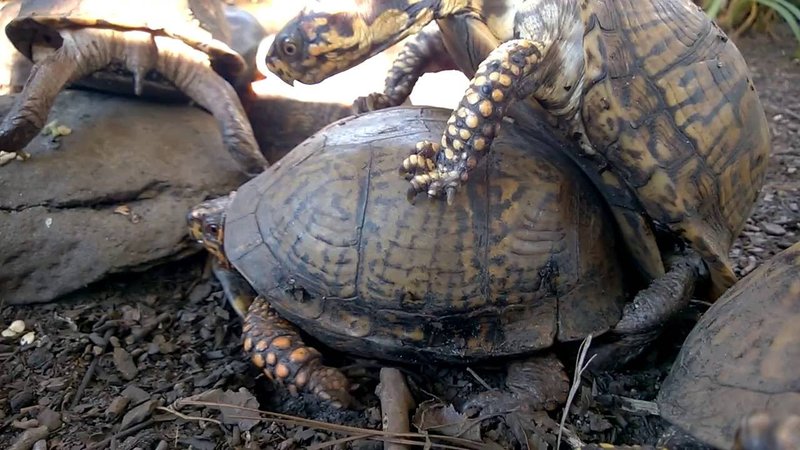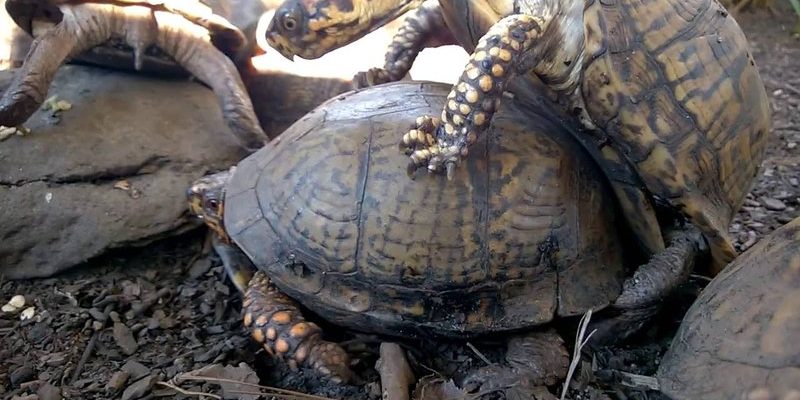
When considering box turtles, it’s essential to understand that they are not just simple creatures with hard shells. Their reproductive behavior is fascinating and involves specific rituals, seasonal patterns, and environmental cues. Let’s dive into the world of box turtles to explore how they mate, what their breeding season looks like, and how they care for their young.
The Basics of Box Turtle Reproduction
Box turtles are known for their longevity, with some living up to 100 years. But when it comes to breeding, they have a different timeline. Generally, these turtles reach sexual maturity between 5 to 10 years of age, depending on their species and environmental conditions. Here’s the thing: they don’t rush into relationships, and mating can often be influenced by environmental factors such as temperature and rainfall.
Throughout the warm months, particularly in spring and summer, box turtles become more active. This engaging behavior can lead them to seek out mates. Males are often more territorial and will establish their presence through displays of dominance, which can include head bobbing or even slight nipping. It’s like a little wrestling match, but without any serious harm.
Breeding Season: Timing is Everything
The breeding season for box turtles typically starts around late spring and can extend into early summer. Interestingly, it coincides with the season for more food availability and favorable weather conditions. During this time, you might notice more turtles crossing roads or wandering into gardens as they search for potential mates.
Mating can happen in a variety of locations, often in moist areas near ponds or streams where they can be found basking. After a successful courtship, the male will mount the female, and copulation can last anywhere from a few minutes to several hours. It’s a fascinating process to witness, especially if you happen upon it in the wild.
Understanding the Mating Process
During copulation, the male will grasp onto the female’s shell with his claws for stability. It’s a careful maneuver, and you can often see them moving slowly together to ensure a successful mating. Once the mating process is complete, the female carries the fertilized eggs in her body until she’s ready to lay them.
One unique aspect of box turtle reproduction is their ability to store sperm. This means that even if a female mates with a male but doesn’t find a suitable spot to lay her eggs, she can still fertilize the eggs later on. Nature has a way of giving these turtles some flexibility, which is beneficial in changing environments.
Egg Laying: Nurturing the Next Generation
When it comes time for a female box turtle to lay her eggs, she seeks out a sandy or loose soil area. This is crucial because the right substrate temperature is essential for the eggs to develop properly. Typically, a female will lay anywhere from 2 to 12 eggs in a clutch. Once she lays her eggs, which can take a little while, she covers them up and leaves them to incubate in the earth.
It can take anywhere from 60 to 90 days for the eggs to hatch, depending on environmental conditions. The hatchlings emerge fully formed, ready to face the world without any parental help. It’s nature’s way of ensuring they are self-sufficient right from the start.
Parental Care: Nature’s Independence
Unlike many animals, box turtles don’t typically provide parental care after laying their eggs. Once the female has buried her eggs, her job is done. The hatchlings are born with a small amount of yolk left in their bodies, providing them with the energy needed to dig their way out and find food.
This independence is fascinating. Baby box turtles instinctively know how to hunt for food, like insects and other small organisms. They have a challenging life ahead, as they will need to evade predators and navigate their surroundings. This lack of parental guidance can seem harsh, but it’s a common theme in many reptile species.
Challenges for Hatchlings
The first few months are critical for hatchlings. They face various threats from predators such as birds, raccoons, and even larger box turtles. To increase their chances of survival, many will hide in leaves or burrow into the ground. It’s a harsh world, but these turtles have evolved to meet these challenges head-on.
Observing this life cycle can make you appreciate the resilience of these creatures. The survival of the fittest plays a significant role in the population of box turtles, and while many hatchlings won’t survive, those that do contribute to the longevity of the species.
Conservation and the Future of Box Turtles
As we cherish the unique breeding and reproductive behaviors of box turtles, it’s also essential to think about their future. Sadly, many species face threats from habitat loss, climate change, and human activity. The conservation of their habitats is crucial for sustaining their populations.
You might have seen campaigns aiming to protect these wonderful creatures. It’s a great reminder that even small actions, like not disturbing nests or being cautious when driving through their natural habitats, can help ensure these turtles thrive for generations to come.
Breeding and reproductive behavior in box turtles is a tale of patience, instinct, and resilience. From the courtship rituals to the independence of hatchlings, these turtles offer us a glimpse into a world that is both fascinating and a bit harsh. As we learn more about their life cycle, we also gain insight into the importance of preserving their habitats and protecting their future.
Next time you see a box turtle making its slow trek across the ground, take a moment to appreciate the journey it has undertaken. Each turtle has a story to tell, and their reproductive saga reminds us of the delicate balance of nature and the essential role every creature plays in our ecosystem.

